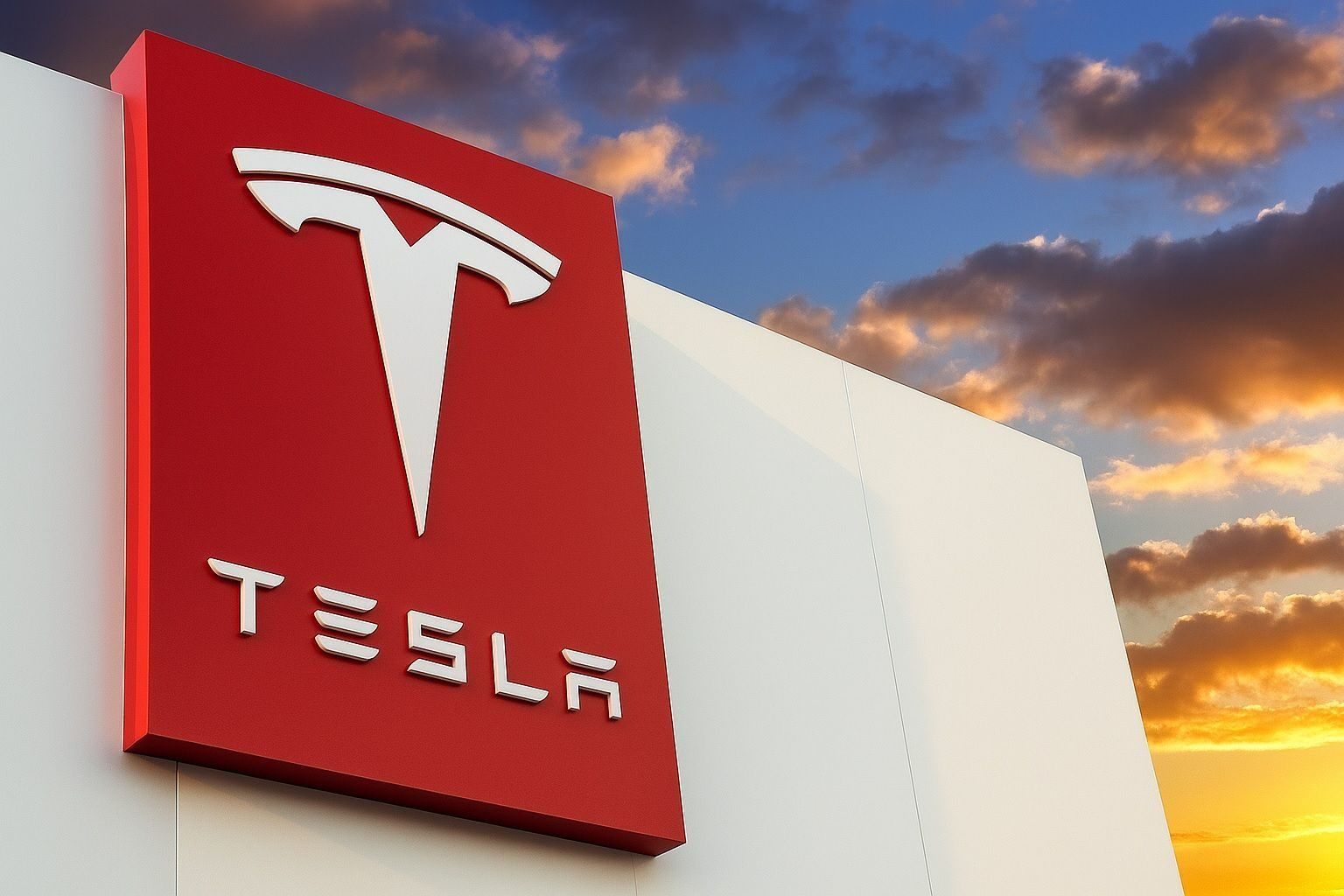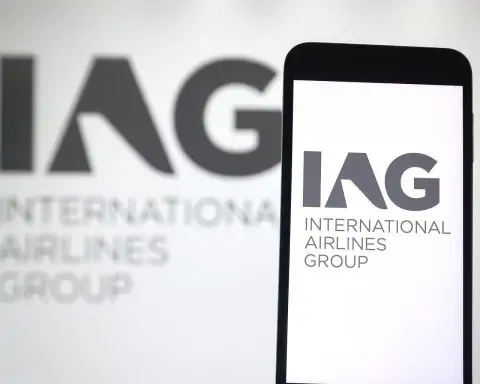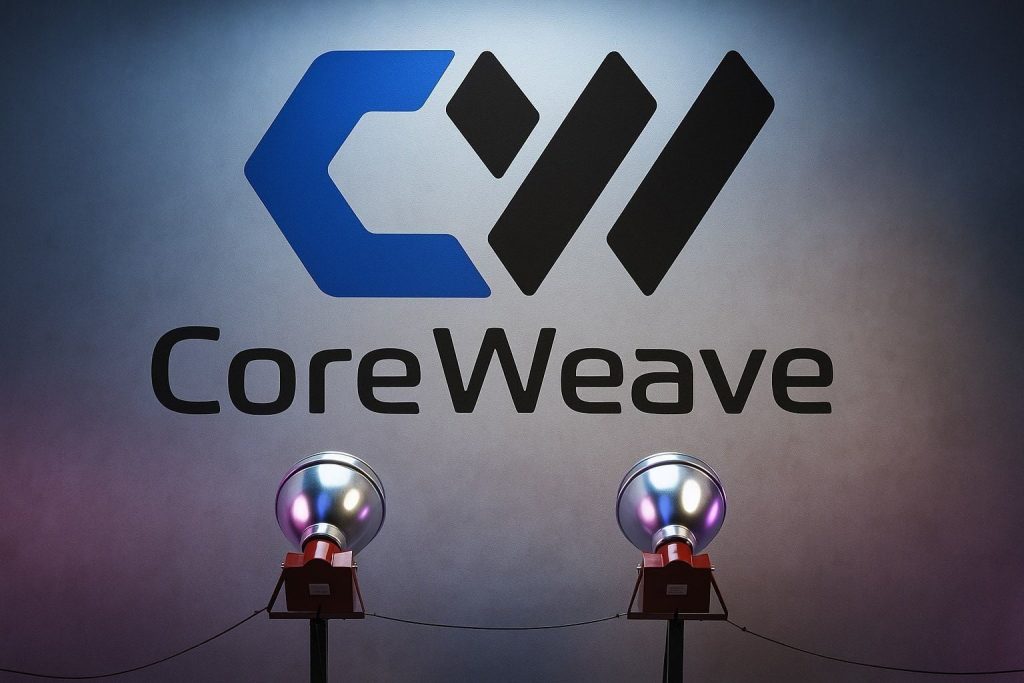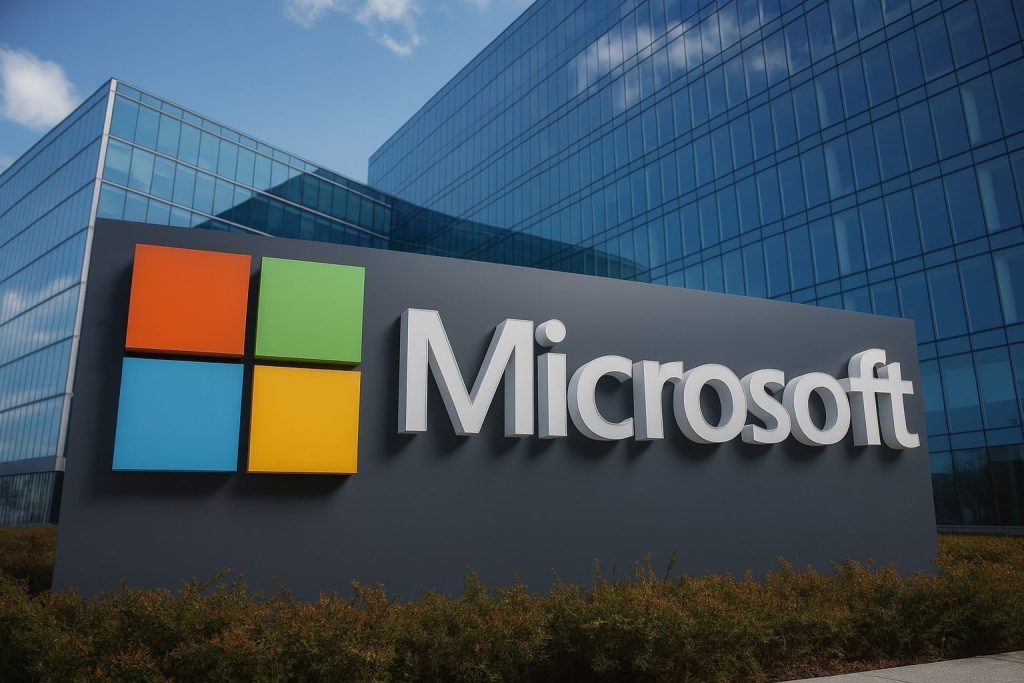Tesla stock is closing out the week back near the top of its recent trading range, even as its core car business faces intensifying pressure in Europe and regulators flag fresh compliance issues in the United States.
At Friday’s close, Tesla Inc. (NASDAQ: TSLA) traded around $426.6 per share, roughly 1.7% higher than the prior session, with an intraday range of about $416.9 to $426.9. That leaves the stock not far below its recent 52‑week high near $488.5, and more than double its 12‑month low around $214.3. [1]
With a market capitalization of roughly $1.4 trillion and a price‑to‑earnings ratio near 284, Tesla remains priced for years of strong growth, even as analysts broadly rate the stock a “Hold” and see modest downside from current levels. [2]
Below is a breakdown of the key Tesla stock news and catalysts for November 28, 2025.
1. Where Tesla Stock Stands Today
- Last close: about $426.58
- Day’s move: roughly +1.7%
- 52‑week range: $214.25 – $488.54 [3]
- Valuation: P/E ~284, market cap ~$1.42 trillion, P/E/G ~16.8, beta ~2.06 (high volatility vs. the market). [4]
Analyst survey data show a consensus “Hold” rating, with TipRanks tracking 13 Buys, 11 Holds and 10 Sells on TSLA and an average price target around $383, implying roughly 10% downside from current levels. [5] MarketBeatsimilarly reports a Hold consensus and an average target in the high‑$300s (~$394). [6]
In other words, Wall Street is split: the stock price is already discounting a lot of future success, while Tesla’s fundamentals are increasingly mixed across geographies.
2. New Battery Patent: High‑Temperature Performance and Robotaxi Ambitions
One of the most concrete pieces of news today is on the technology front.
Tesla has had a new battery patent published by the U.S. Patent and Trademark Office that could materially improve performance for both its robotaxi fleet and energy storage business. [7]
What the patent covers
According to Benzinga’s summary of the filing, Tesla describes:
- A new “dicarbonate” solvent: Dimethyl 2,5‑dioxahexanedioate (DMOHC)
- A new lithium salt: Lithium bis(fluorosulfonyl)imide (LiFSI)
Together, this electrolyte system is designed to help lithium‑ion batteries remain stable at high voltage and high temperatures, with tests suggesting:
- Stability up to roughly 85°C (185°F)
- ~99% capacity retention after about 3,500 hours of use
- Reduced gas buildup, potentially lowering fire and swelling risks in cells [8]
Why it matters for Tesla stock
The patent ties directly into Tesla’s robotaxi and energy storage narrative:
- Higher temperature tolerance and lower degradation are especially important for robotaxis that operate nearly continuously, often in hot climates.
- Improved safety characteristics could help regulators feel more comfortable with large autonomous fleets and big stationary battery farms.
- The patent emerges just as Tesla has inked a $2 billion, three‑year energy storage battery supply deal with Samsung SDI, on top of a prior $4.3 billion agreement with LG Energy Solution for LFP batteries. [9]
- In the latest reported quarter, Tesla’s energy storage business revenue jumped about 44% year‑on‑year to $3.4 billion, representing over 12% of total company revenue. [10]
For investors, today’s patent highlights how Tesla is increasingly positioning itself as a battery, AI and energy company, not just an automaker — a key part of the bull case that tries to justify the stock’s elevated multiple.
3. Free FSD Rides in Europe and the FSD v14.2.1 Safety Push
Software and autonomy are front and center in today’s Tesla headlines.
Free supervised FSD ride‑alongs across Europe
Tesla is offering free “Full Self‑Driving (Supervised)” ride‑along events in Germany, France, Italy and other European markets until the end of the year. [11]
- Events span cities like Berlin, Hamburg, Frankfurt, Düsseldorf, Cologne and Hannover in Germany; Paris, Lyon, Lille, Bordeaux, Toulouse and Nantes in France; and Rome, Milan, Bologna, Verona and others in Italy. [12]
- Customers sit in the passenger seat while a Tesla employee drives and demonstrates FSD in real‑world conditions, underlining that this is still a supervised system. [13]
Crucially, the Netherlands Vehicle Authority (RDW) has confirmed it is working with Tesla to secure regulatory approval for FSD in Europe, and it has backed Tesla’s stated target of February 2026 for deployment in the region. [14]
This campaign is clearly designed to:
- Rebuild trust and excitement around FSD in a region where Tesla’s sales have slumped
- Showcase the capabilities of FSD v14.x just as Tesla tries to shift the narrative from lagging EV sales to software and robotaxis
FSD v14.2.1: More aggressive driver attention monitoring
Alongside those ride‑alongs, Tesla has started rolling out FSD v14.2.1 to AI4 vehicles and the Cybertruck, according to Teslarati. [15]
The new point release:
- Arrived less than a week after the broader FSD v14.2 rollout
- Adds a key line to the release notes: “Camera visibility can lead to increased attention monitoring sensitivity”— meaning the in‑cabin camera now tracks driver attention more aggressively [16]
- Is explicitly framed as a safety upgrade, aiming to reduce incidents tied to driver distraction
Coverage from Tarantas News underscores this, noting that heightened sensitivity in the driver‑state monitoring system is meant to boost on‑road safety and reflects Tesla’s ability to iterate quickly on FSD v14.x based on user feedback. [17]
Investor reaction to FSD progress
- Tesla shareholder Ross Gerber said Tesla’s FSD v14.2 “drives much better than before”, but still called it a Level 2 system that is “not good enough to be unsupervised,” highlighting that Waymo remains the perceived leader in fully driverless robotaxis. [18]
- Elon Musk has hinted that FSD v14.3 could be the “final puzzle piece” toward unsupervised autonomy, but that remains a goal rather than a regulatory reality. [19]
For Tesla stock, today’s FSD updates reinforce the software/AI growth story, but they also underscore the gap between current supervised systems and true Level 3/4 autonomy — and the regulatory scrutiny that comes with it.
4. India: New Flagship Centre in Gurugram and a Trademark Victory
Tesla also made a notable international expansion move this week that’s still driving headlines today.
First all‑in‑one Tesla Centre in India
Tesla has opened its first all‑in‑one “Tesla Centre” in Gurugram, Haryana, which India Today describes as the company’s largest physical presence in the Indian market to date. [20]
Key features:
- A single site integrating retail, service, deliveries and charging
- Test drives of the Model Y in an “experience store” setting
- A V4 Supercharger installed on site
- A display of Optimus Gen 2, Tesla’s humanoid robot prototype, also being showcased in Mumbai and Delhi [21]
Haryana’s Chief Minister Nayab Singh Saini used the launch to pitch the state as a future hub for Tesla manufacturing, saying he expects Tesla to establish its first EV plant and related units in the state, citing Haryana’s industrial base and “ease of doing business” efforts. [22]
Delhi High Court backs Tesla’s trademarks
The Gurugram opening follows a key legal win:
- On November 24, the Delhi High Court ordered firms allegedly using Tesla’s marks — including Tesla Power India — to stop, finding that Tesla Inc. had built goodwill in India and that local use of “Tesla Power” and “Tesla Power USA” appeared intended to mislead customers about a U.S. connection. [23]
For investors, this combination of flagship physical presence + brand protection + political support strengthens the long‑term India growth story, even though near‑term sales volumes there are still small relative to China, Europe and the U.S.
5. Fresh U.S. Regulatory Scrutiny: NHTSA Petition on Lamp Noncompliance
On the regulatory front, Tesla appeared today in the Federal Register in a notice that may not be headline‑grabbing but is important for risk‑aware investors. [24]
The U.S. National Highway Traffic Safety Administration (NHTSA) has formally acknowledged receipt of a Tesla petition seeking a finding of “inconsequential noncompliance” for lighting issues affecting certain Model 3 and Model Y vehicles.
Key details from the notice:
- The case involves about 6,025 vehicles: 2017–2023 Model 3 and 2020–2023 Model Y, built between November 2017 and July 2023. [25]
- These cars may have stop and rear turn signal lamps (in the left‑rear combination lamp) whose photometric intensity slightly exceeds the maximum allowed under FMVSS No. 108 (roughly 321.5 cd vs. a 300 cd limit in one configuration). [26]
- Tesla filed a non‑compliance report in July 2024 and petitioned in August 2024 for an exemption from notification and remedy requirements, arguing the deviation is inconsequential to safety. [27]
- NHTSA is accepting public comments until December 29, 2025, and has not yet granted or denied the petition. [28]
While this isn’t a recall — and the issue appears relatively minor — it’s a reminder that Tesla’s regulatory exposure remains non‑trivial, especially as its vehicles pack ever more complex hardware and software.
6. Big‑Money Flows: Norges Bank Buys, Other Funds Trim
Institutional positioning around Tesla also shifted today, based on newly surfaced 13F‑related coverage.
Norges Bank’s multibillion‑dollar move
Norges Bank, which manages Norway’s sovereign wealth fund, has disclosed a new Tesla position worth about $11.84 billion, making it one of the largest institutional investors in TSLA. [29]
The move underscores that:
- Some of the world’s biggest long‑term investors still see Tesla as a core holding
- Despite volatility and valuation concerns, Tesla remains one of the most important AI and EV plays in global equity portfolios
Smaller funds rebalancing
In contrast, Virtue Capital Management LLC reduced its Tesla holdings by about 23% in Q2, selling just over 2,000 shares and ending the quarter with 6,765 shares worth roughly $2.15 million. [30]
MarketBeat’s summary also highlights that:
- Several other wealth managers modestly added to their Tesla positions
- Institutional investors and hedge funds collectively own about 66% of Tesla’s float [31]
Collectively, today’s data support a picture where large, diversified institutions are staying invested, while smaller managers and tactical funds continue to rebalance around price swings.
7. The Investor Divide: Cathie Wood vs. Peter Thiel, and Ultra‑Bullish Forecasts
The disagreement over Tesla’s future is also visible in the high‑profile investor community.
Cathie Wood still ultra‑bullish
A new TipRanks article notes that Cathie Wood remains one of Tesla’s most vocal supporters:
- She maintains an ambitious $2,600 price target for TSLA by 2030, with roughly 90% of that upside tied to robotaxis. [32]
- Her ARK Innovation ETF (ARKK) has trimmed some Tesla shares recently as part of portfolio rebalancing, but the fund still added over 500,000 shares in Q3 and keeps Tesla as its largest holding (~12% of the portfolio). [33]
Peter Thiel turns cautious
On the other side, Peter Thiel’s fund cut its Tesla stake by about 76%, slashing holdings from around 272,600 shares to 65,000 as of September 30 while also exiting Nvidia entirely. [34]
Thiel’s concern, according to the piece, is less about Tesla specifically and more about a potential AI bubble, prompting him to pull back from high‑beta AI plays and raise cash.
Extreme long‑term forecasts
Adding to the bullish camp, a Tesla stock prediction piece syndicated via CryptoRank / Watcher.Guru cites data from StockScan suggesting Tesla could: [35]
- Reach around $400 by 2030, and
- Climb to roughly $4,653 by 2040 and $5,879 by 2050
That would imply a gain of about 747% from the last recorded price near $426.6. The article itself cautions that such projections are highly uncertain and that markets are volatile — a disclaimer investors should take very seriously.
AI chip narrative
The same coverage highlights Elon Musk’s comments about Tesla’s internal AI chip roadmap:
- Current cars run on AI4 chips
- Tesla is close to taping out AI5 and beginning work on AI6
- Musk’s stated goal: bring a new AI chip design to volume production every 12 months and eventually ship more AI chips than all other AI chips combined [36]
Those claims feed directly into the “Tesla as an AI infrastructure company” storyline that many bulls see as the real justification for today’s valuation — even as bears argue that such ambitions are speculative and unproven at scale.
8. Cost Discipline: Lessons From BYD and Tesla’s Former Sales Chief
Another Tesla‑linked story today comes from former Tesla global sales chief Jon McNeill, who told Business Insiderthat Tesla learned powerful cost‑cutting lessons from Chinese rivals such as BYD. [37]
In Benzinga’s recap:
- McNeill described Tesla as a “learning sponge”, noting that teardown work on Chinese EVs revealed extensive parts reuse — for example, using the same wiper motors across multiple models to lower costs.
- He emphasized that new EV makers must be “absolutely relentless” in reducing costs to scale in what is an extremely capital‑intensive industry. [38]
This is particularly relevant given:
- Tesla’s price cuts and cheaper variants to defend market share
- Fierce competition from BYD and other Chinese automakers in both Europe and China
- The possibility that margin pressure persists even if volumes eventually stabilize
9. Europe’s Crisis, China’s Stability and the Core EV Business
Beneath the patent filings and FSD buzz, Tesla’s core automotive business remains under pressure — especially in Europe.
Europe: a steep decline in sales
Recent data cited by Reuters and multiple analysis pieces show: [39]
- October European sales down about 48–49% year‑on‑year, with around 5,600–7,000 registrations, depending on dataset
- Tesla’s EV market share in Europe slipping to around 0.6%
- Year‑to‑date registrations down nearly 30% through October
At the same time, overall European EV sales grew roughly 26%, meaning Tesla is losing share even as the market expands. [40]
Analysts and commentators point to a mix of factors:
- Intensifying competition from European incumbents (like Volkswagen) and Chinese brands (including BYD and Xiaomi)
- A narrow model lineup that has aged while rivals release dozens of new EVs
- Lingering backlash in parts of Europe to Elon Musk’s political comments, which some market observers believe has weighed on demand [41]
Primary Ignition’s two new commentary pieces today — “Tesla’s Critical Juncture” and “Tesla’s European Crisis Tests Investor Resolve” — both underscore how Europe has become Tesla’s weakest region and a key reason analysts worry that global deliveries could fall in 2025. [42]
China: stabilisation, not boom
By contrast, China — home to Tesla’s crucial Shanghai Gigafactory — appears more stable but still not booming:
- Reuters reports that Chinese deliveries in October were down about 35.8% year‑on‑year, with year‑to‑date sales down around 8.4% through October. [43]
- Tesla executive Tao Lin has publicly reiterated that the company has no plans to exclude Chinese suppliers from its global supply chain, pushing back against speculation it might shift production out of China. [44]
Primary Ignition describes Shanghai as the cornerstone of Tesla’s cost efficiency and warns that any forced relocations would meaningfully raise production costs and risk supply disruptions. [45]
United States: cooling after incentives
In the United States, Tesla enjoyed:
- A surge in September sales (up ~18%), driven by buyers racing to beat the expiration of a federal EV tax credit, but
- A 24% drop in October, reflecting a broader cooling in EV demand amid higher interest rates and consumer fatigue. [46]
Analysts cited by Reuters now expect Tesla’s global vehicle deliveries to decline about 7% this year, following a small decline last year — a stark contrast with the company’s earlier ambitions for 20–30% annual growth. [47]
All of this helps explain why valuation is such a flashpoint: Tesla is trading like a hyper‑growth AI firm at a time when its core EV volume is flat to negative in key markets.
10. How All of This Fits Together for TSLA
Bringing today’s news flow together, the Tesla story on November 28, 2025 looks like this:
Positives for the bull case
- A new high‑temperature battery patent that could strengthen both the robotaxi and energy storagebusinesses. [48]
- Rapid iteration on FSD v14.x, including v14.2.1’s safety‑focused driver monitoring and an aggressive European FSD ride‑along campaign ahead of a targeted February 2026 rollout. [49]
- Expansion in India, backed by local political support and a key trademark win, signalling long‑term growth potential in another massive auto market. [50]
- Strong energy storage growth and sizable battery supply deals with Samsung SDI and LG Energy Solution. [51]
- Ongoing support from mega‑institutions such as Norges Bank, plus vocal AI‑driven bulls like Cathie Wood and ultra‑long‑term price forecasts that, while speculative, show how big some investors think this can get. [52]
Risks and constraints highlighted today
- Sharp sales declines in Europe, softening demand in China and a cooled U.S. EV market, raising questions about near‑term revenue and margin growth. [53]
- Regulatory scrutiny, including a new NHTSA noncompliance petition on lighting and ongoing oversight of FSD and robotaxis. [54]
- A sky‑high valuation, with P/E near 284 and multiple analyst surveys signaling only limited upside — or even modest downside — from current prices. [55]
- Divided sentiment among sophisticated investors, from Thiel’s big reduction amid AI bubble fears to Jon McNeill’s warning that Tesla‑like EV makers must be relentless on cost to survive the next phase of competition. [56]
11. What to Watch Next
For anyone following Tesla stock into December and beyond, today’s news points to several key upcoming catalysts:
- Regulatory milestones
- FSD and robotaxi updates
- Core business metrics
Final note
Nothing in this article is investment advice. Tesla remains a high‑volatility stock where AI, autonomy, batteries and energy are increasingly important drivers of value — but the company still has to navigate intense competition, regulatory risk and uneven EV demand. As always, anyone considering TSLA should do their own research, weigh their risk tolerance, and, if needed, consult a licensed financial adviser.
References
1. www.macroaxis.com, 2. www.marketbeat.com, 3. www.macroaxis.com, 4. www.marketbeat.com, 5. www.tipranks.com, 6. www.marketbeat.com, 7. www.benzinga.com, 8. www.benzinga.com, 9. www.benzinga.com, 10. www.benzinga.com, 11. www.benzinga.com, 12. www.benzinga.com, 13. www.benzinga.com, 14. www.benzinga.com, 15. www.teslarati.com, 16. www.teslarati.com, 17. tarantas.news, 18. www.benzinga.com, 19. www.benzinga.com, 20. www.indiatoday.in, 21. www.indiatoday.in, 22. www.indiatoday.in, 23. www.indiatoday.in, 24. www.federalregister.gov, 25. www.federalregister.gov, 26. www.federalregister.gov, 27. www.federalregister.gov, 28. www.federalregister.gov, 29. www.marketbeat.com, 30. www.marketbeat.com, 31. www.marketbeat.com, 32. www.tipranks.com, 33. www.tipranks.com, 34. www.tipranks.com, 35. cryptorank.io, 36. cryptorank.io, 37. www.benzinga.com, 38. www.benzinga.com, 39. www.reuters.com, 40. www.reuters.com, 41. www.reuters.com, 42. primaryignition.com, 43. www.reuters.com, 44. primaryignition.com, 45. primaryignition.com, 46. www.reuters.com, 47. www.reuters.com, 48. www.benzinga.com, 49. www.teslarati.com, 50. www.indiatoday.in, 51. www.benzinga.com, 52. www.marketbeat.com, 53. www.reuters.com, 54. www.federalregister.gov, 55. www.marketbeat.com, 56. www.tipranks.com, 57. www.federalregister.gov, 58. www.benzinga.com, 59. www.teslarati.com, 60. www.benzinga.com, 61. www.reuters.com, 62. www.benzinga.com







